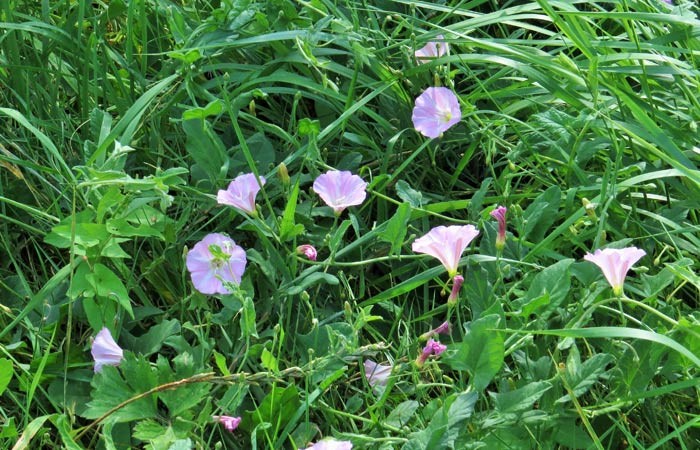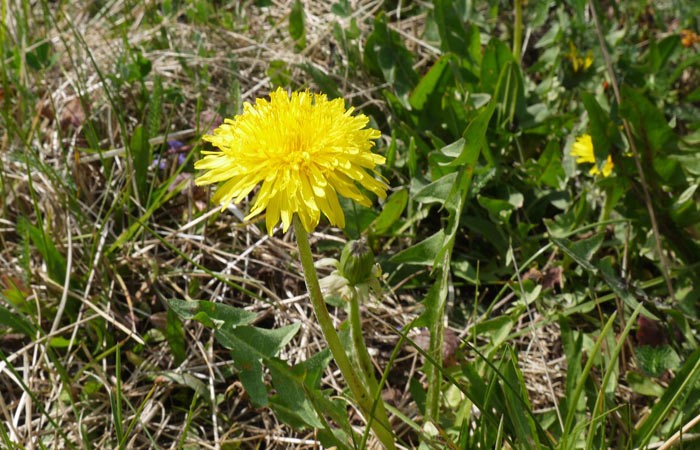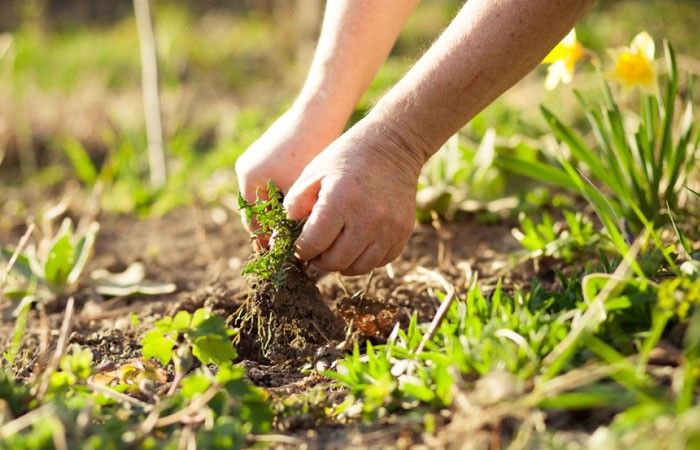Weed Identification Guide

No one likes the sight of different weeds in the garden that they worked hard for it. No matter how beautiful they are, weeds will compete with your favorite plants for nutrients, water, and light. In addition to hindering your plants from growing, they spread diseases and pests as well.
Here, you find 5 common weeds and their scientific names with pictures. In this weed identification guide, we’ll take a look at different types of weeds with names, where they thrive, and how to control them.

What Is A Weed?
Before starting our weed identification guide, let’s see what plants are categorized as weed. A weed is essentially any plant undesirable to grow.
In its technical definition, weed is a plant that can cause economic or ecological damages. In addition, these aggressive plants create health problems for both humans and animals.
There are two other important weeds in many weed identification guides including:
- Noxious Weeds: Any plant designated harmful to public health, agriculture, and wildlife by authorities.
- Invasive Weeds: Weeds that rapidly spreads in natural ecosystems outside their native range, since they don’t have natural enemies there.
Garden Weed Identification Guide
Now, let’s see the names of weeds with pictures. Use this weed identification guide for garden and lawn weeds identification, and knowing the best way to remove them.
1. Dandelion
You can consider dandelion as the most common weed in any weed identification guide. With the scientific name of Taraxacum Platycarpum, dandelions are very easy to identify.
How Does It Look?
They have 2 inch-wide yellow flowers that mature to puffballs, a strong taproot, a semi-hard stem that can grow up to 24 inches, and deeply notched leaves.
Where Does It Thrive?
This common lawn weed can grow in various conditions, but they prefer lawns and gardens in moist, and both sunny and shady areas.
How Do I Control It?
The most important part of garden weed identification guide is how to control weeds. The best tip in lawn weeds identification is preventing them from growing. To prevent dandelion seeds from germinating, apply pre-emergent herbicide in the late winter and not any later.
If you already have dandelions in your garden, use a post-emergent broadleaf herbicide and kill them one by one. The chemical-free solution in our garden weed identification include digging up the long dandelion taproots completely.
2. Wild Violet
Wild violet or Viola Papilionacea is a groundcover weed. To identify weeds by photo, wild violet stands out with its bright violet or blue flowers in late spring and heart-shaped leaves.
How Does It Look?
As we mentioned, the most important feature of this weed is its violet or blue flowers. Wild violet is a low-growing weed, and it is generally about 6 inches tall.
Where Does It Thrive?
Among flowering weeds, wild violets prefer moist, shady lawns or garden areas and spots where grass is thin. However, they can survive drought when established as well.
How Do I Control It?
Some people let this plant grow as an ornamental in shade gardens. But if you are serious about removing them, our weed identification guide suggests creating a thick and healthy lawn. You can also pull them by hand, mulch garden beds in spring, or spray with post-emergence herbicide in spring or fall.

3. Canada Thistle
Thistles have a wide variety, and Canada thistle (Cirsium Arvense) is a common one. Canada thistle has an extensive root system that grows up to several feet.
How Does It Look?
This perennial weed is up to 3 feet wide and 6 feet tall. To identify weeds by photo, you will recognize Canada thistle by its spiny gray-green leaves, more toothed upper leaves and purple, pink or white flowers.
Where Does It Thrive?
Canada thistle grow the strongest in wet and disturbed grounds such as ditch banks, tilled fields, pastures, and of course your backyard.
How Do I Control It?
To control this invasive weed, any valid garden weed identification guide will advise you to remove them as soon as you see them.
You can mulch your garden to remove Canada thistle in landscape areas. Also, you can use a post-emergence herbicide in spring or fall if you have a lawn, or simply dig them out by hand.
4. Bindweed
With the scientific name of Convolvulus, bindweed grow on the ground and through other plants with its creeping thin stems.
How Does It Look?
In any list of common weeds and their scientific names with pictures, bindweed is easy to identify thanks to its arrowhead-shape leaves on its stems, and white or pinkish flowers.
Where Does It Thrive?
You can find bindweed in many places such as farmland, landscapes, and garden areas; essentially anywhere with sufficient soil, sun, water, and other plants for bindweed to climb.
How Do I Control It?
It is best to kill bindweed seeds before germinating with pre-emergent weed control. Otherwise, mulch your garden to prevent it. A thick and shady lawn is also great for challenging the growth of bindweed.
5. Crabgrass
The last weed in our weed identification guide is crabgrass. Scientifically named Digitaria, crabgrass can be a frustrating weed, even to identify weeds by photo, since you can easily mistake it with your turf.
How Does It Look?
As its name suggests, crabgrass is a grassy weed that grows in clusters. To identify it, remember that its green sprouts are lighter than your turf, darkening as they age. They also have broader blades than regular grass, with horizontal stems (up to 18 inches) instead of upward.
Where Does It Thrive?
This prolific weed can grow in any soil type. In thin lawns or bare spots in your garden, you will see its head spreading like four fingers. In order to survive, crabgrass needs as much sun as possible.
How Do I Control It?
To control crabgrass, our weed identification guide suggests mulching your lawn or using a pre-emergence herbicide. You can also treat that spot of your garden with nonselective post-emergence herbicides. The option of pulling the crabgrass by hand is available as well.